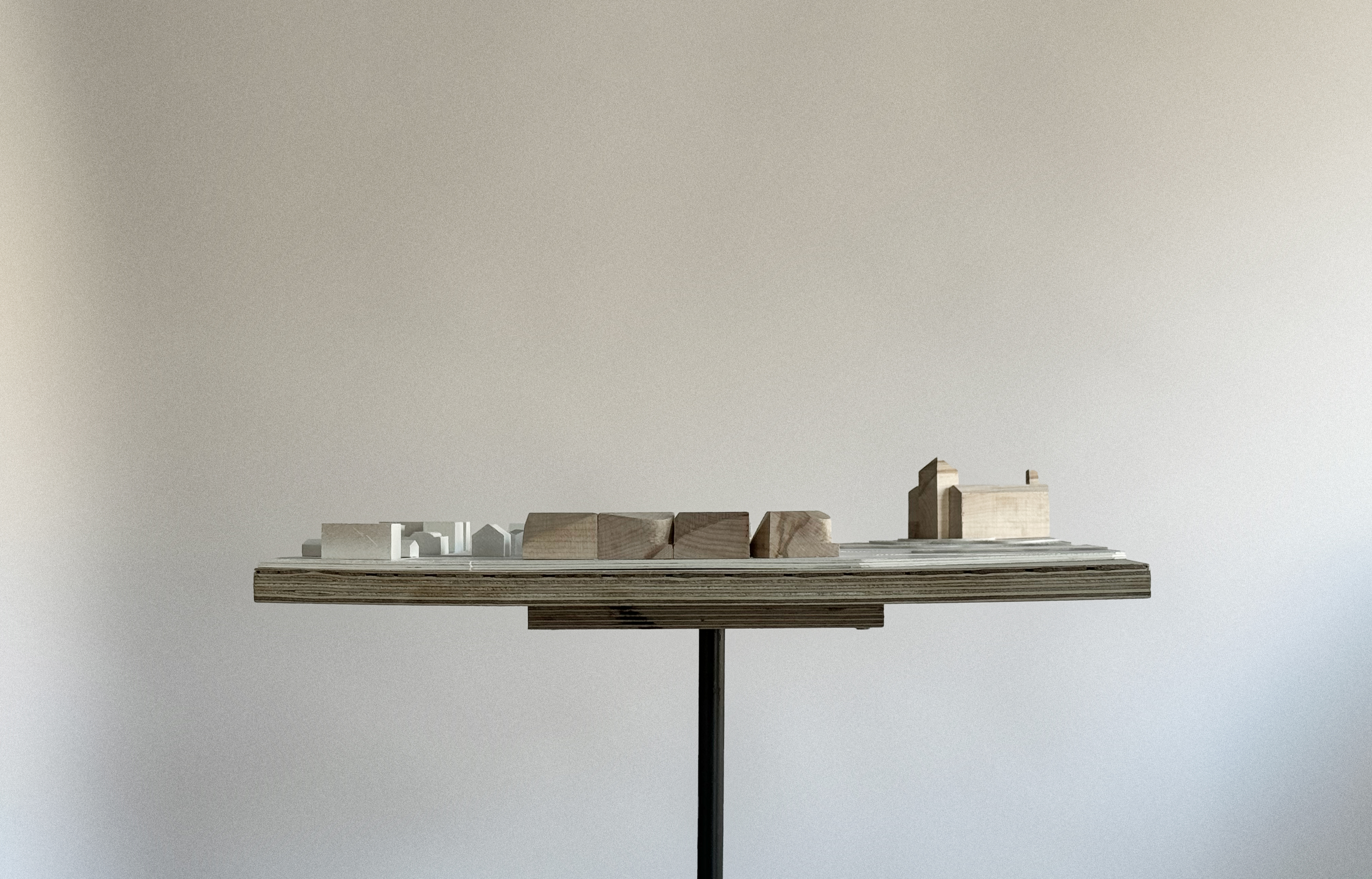
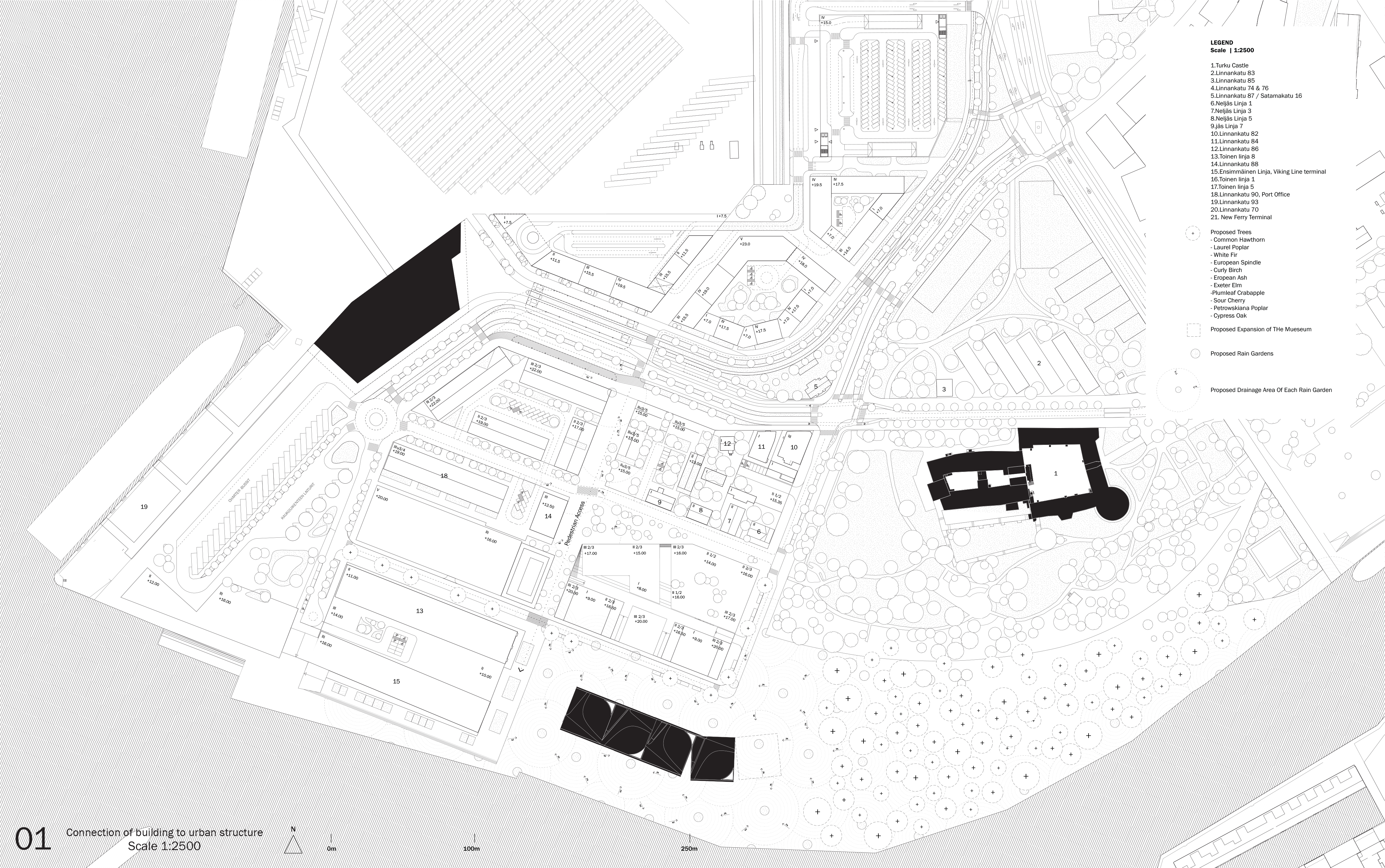
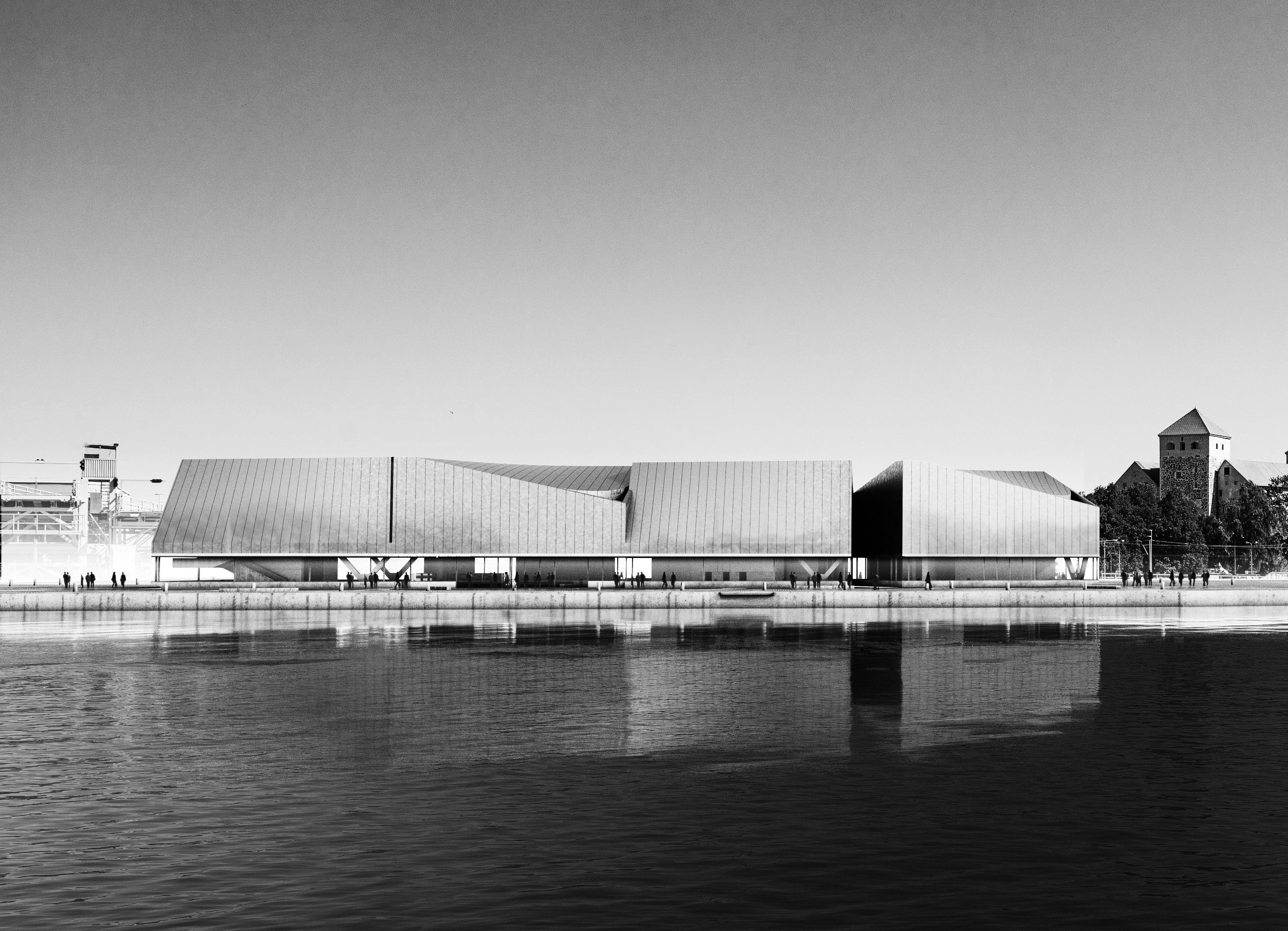

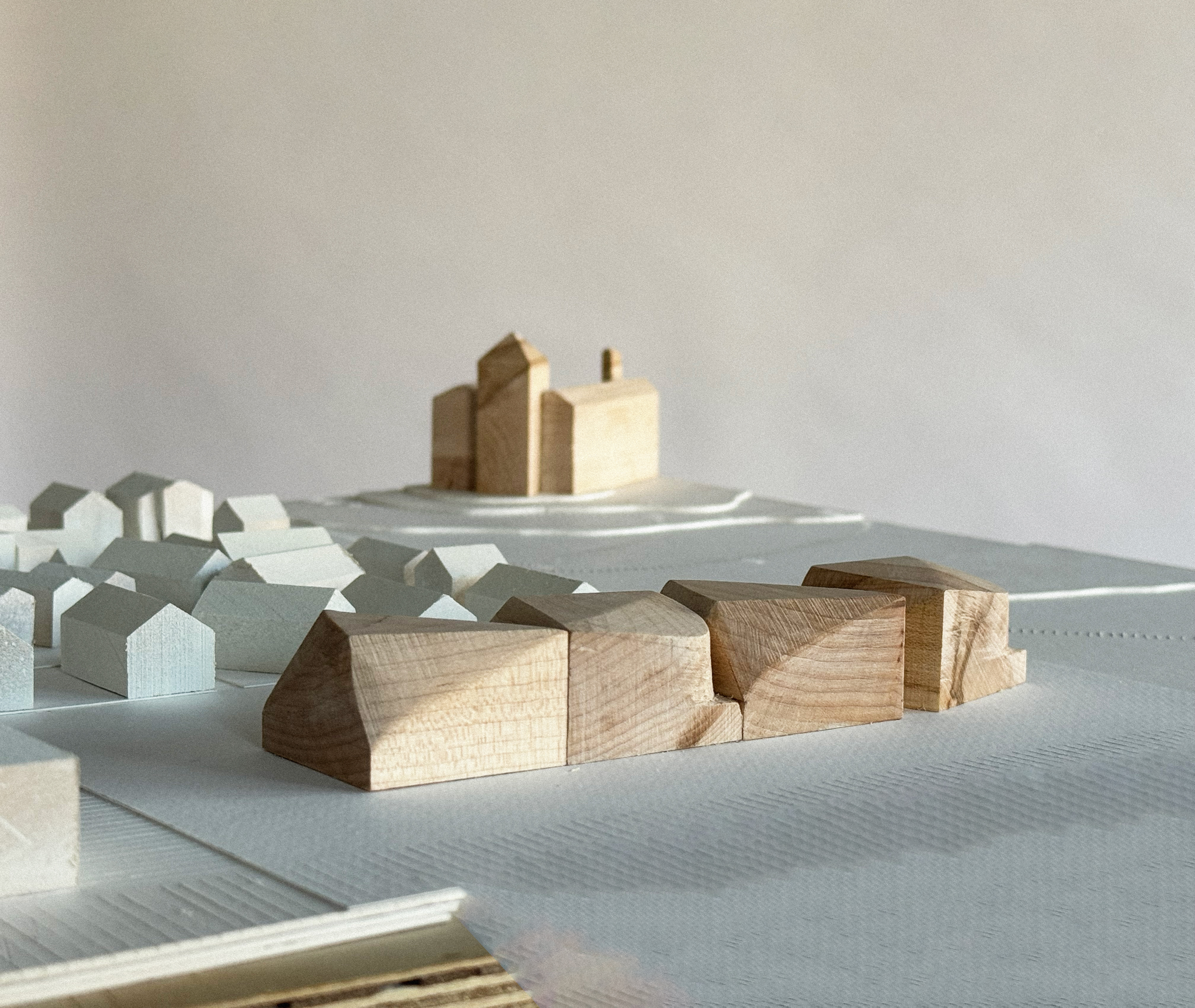
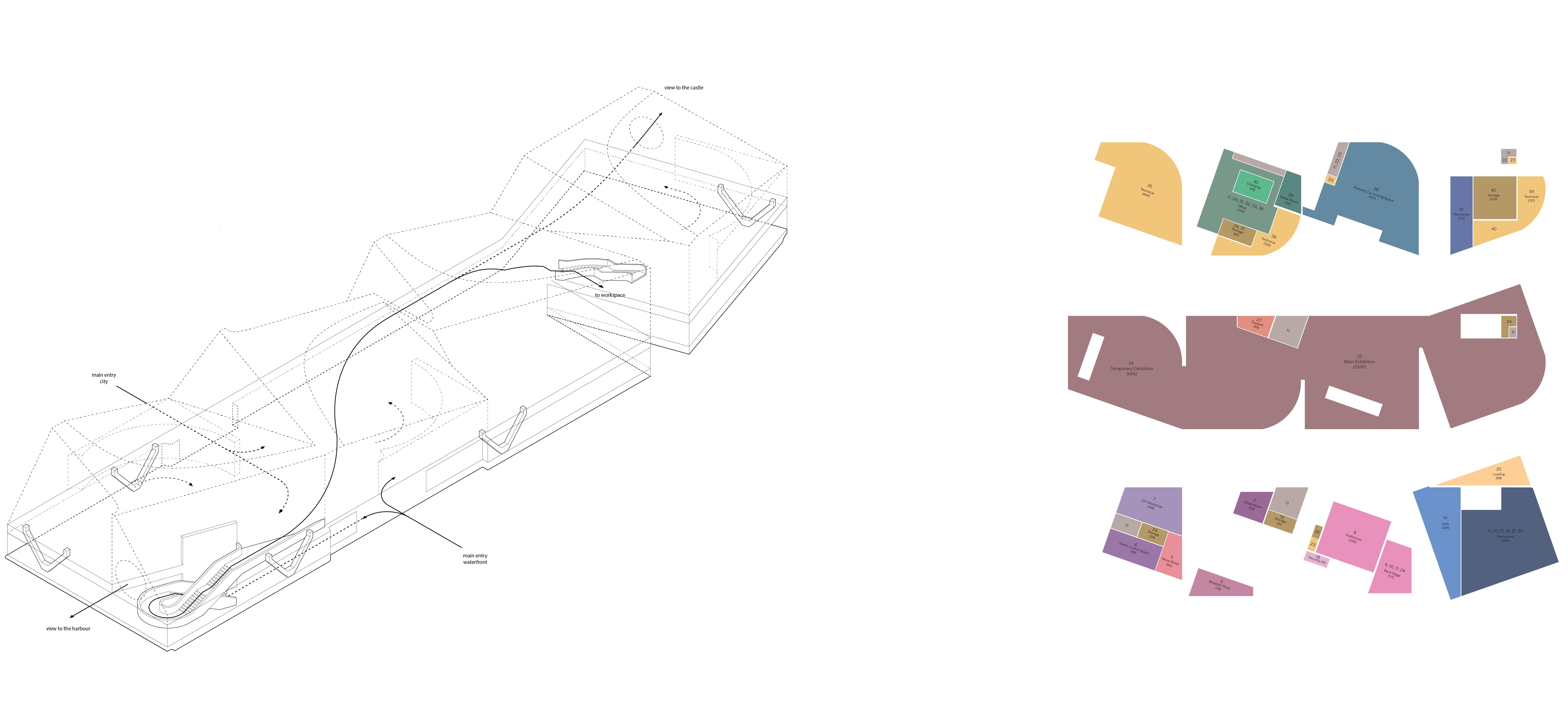
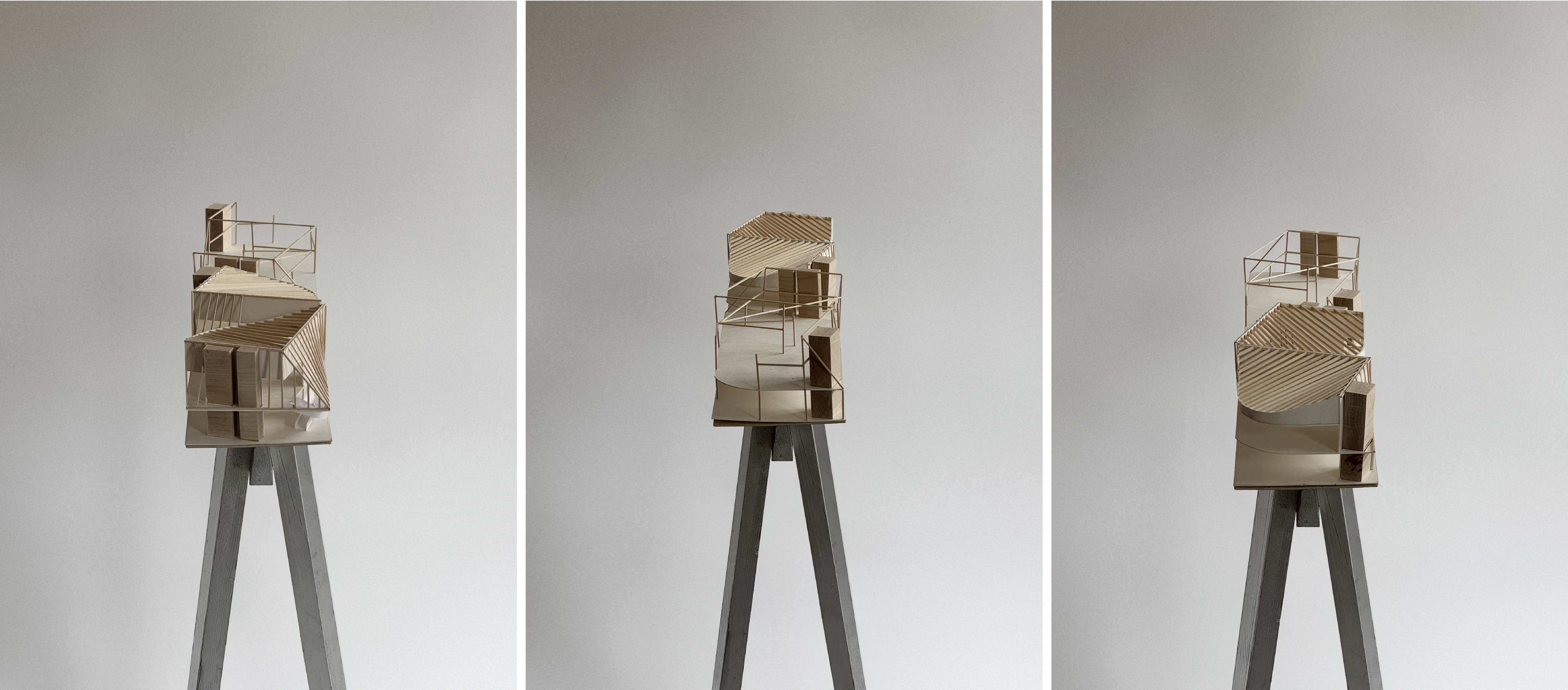
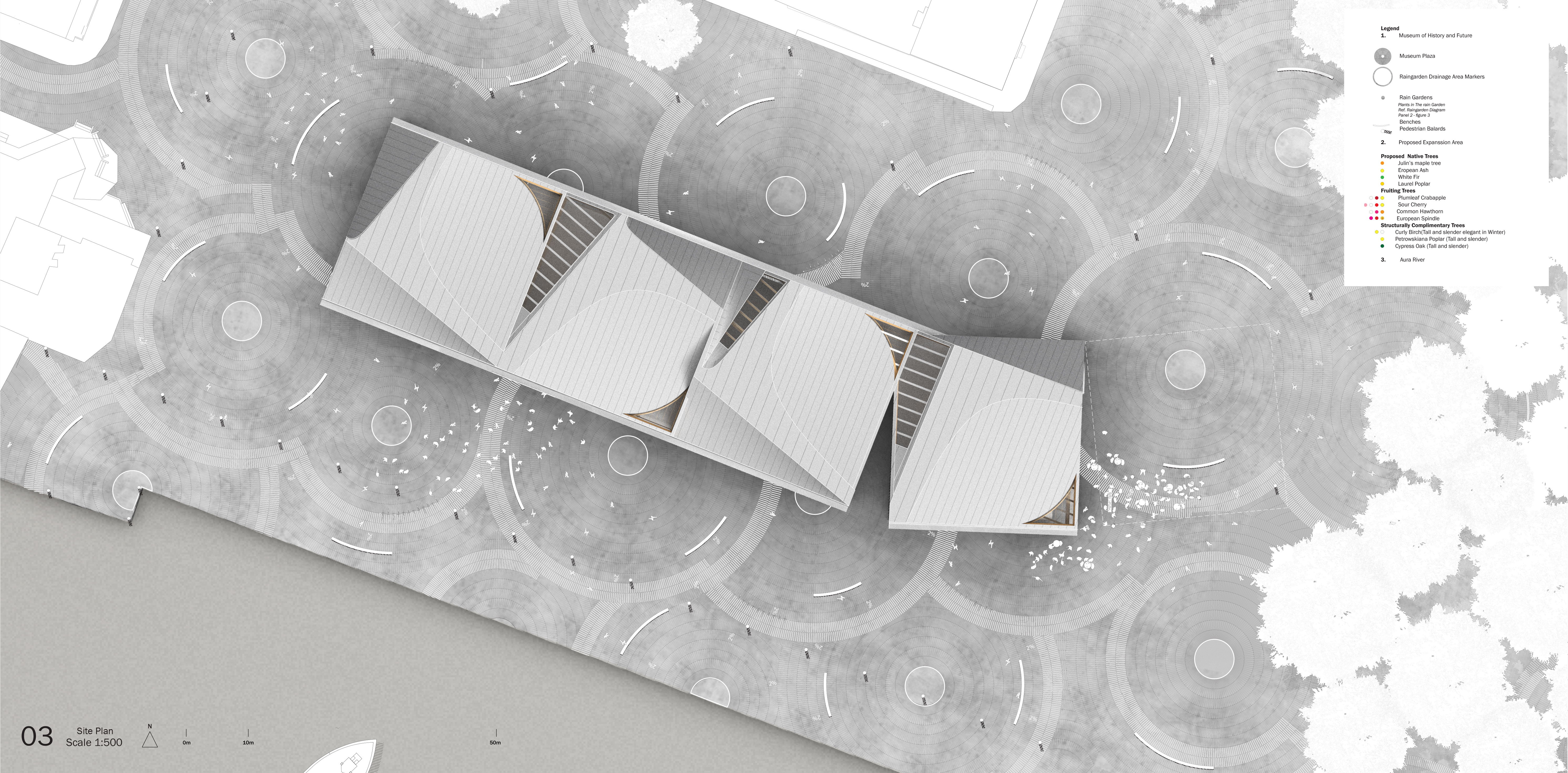
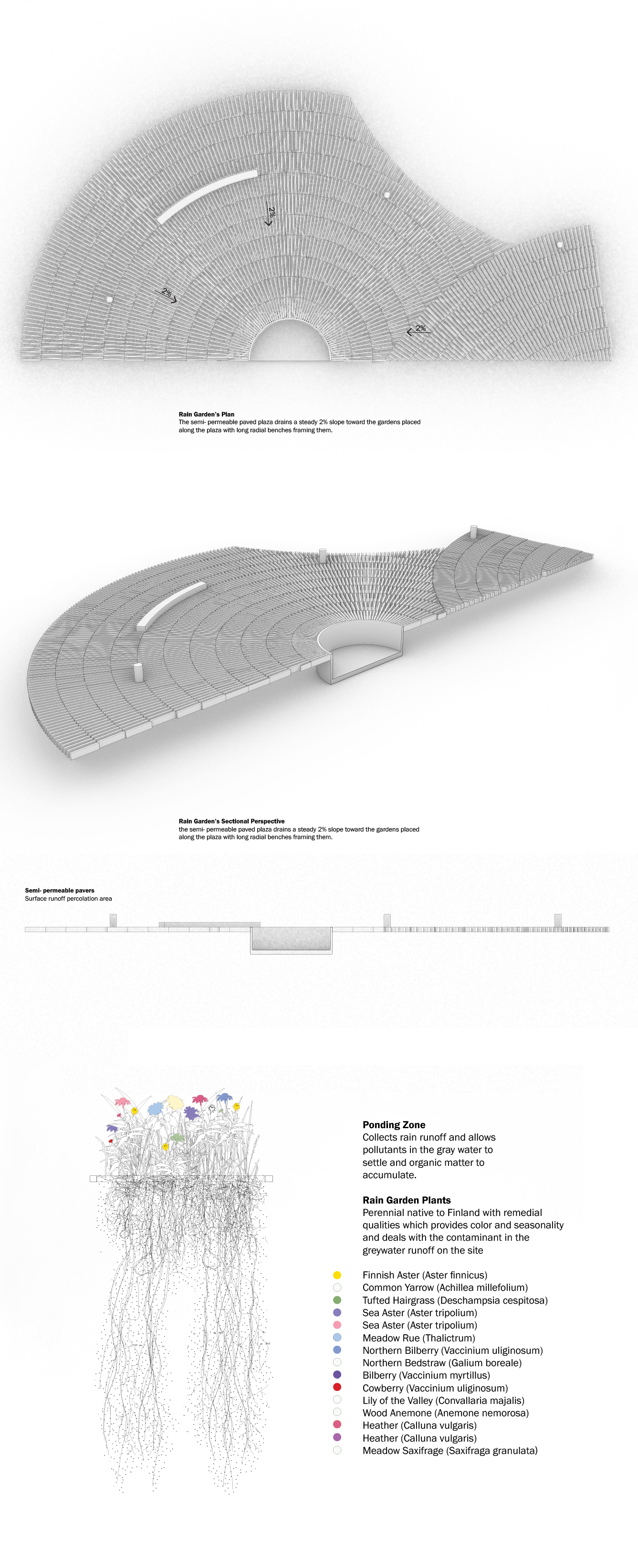

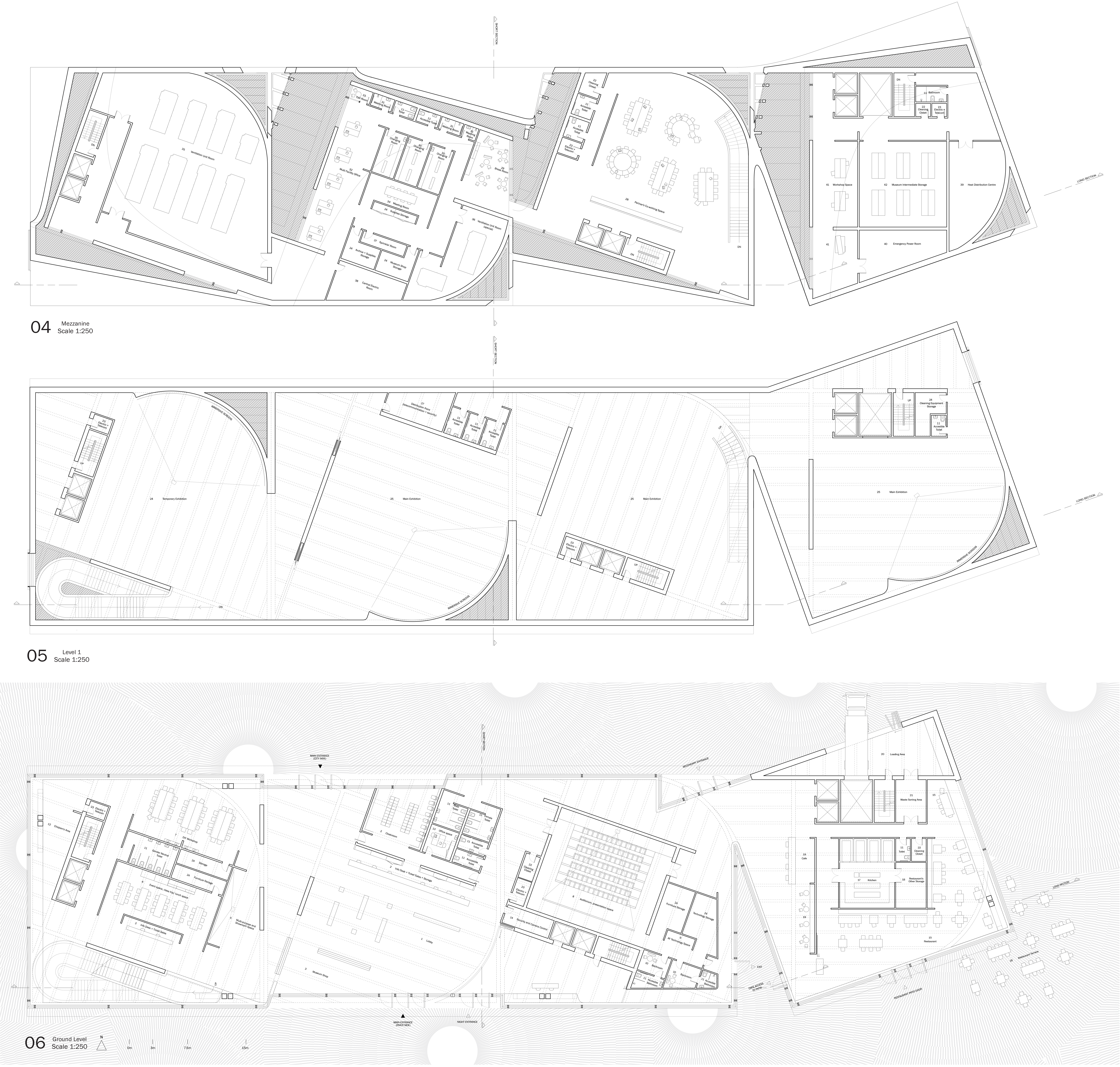

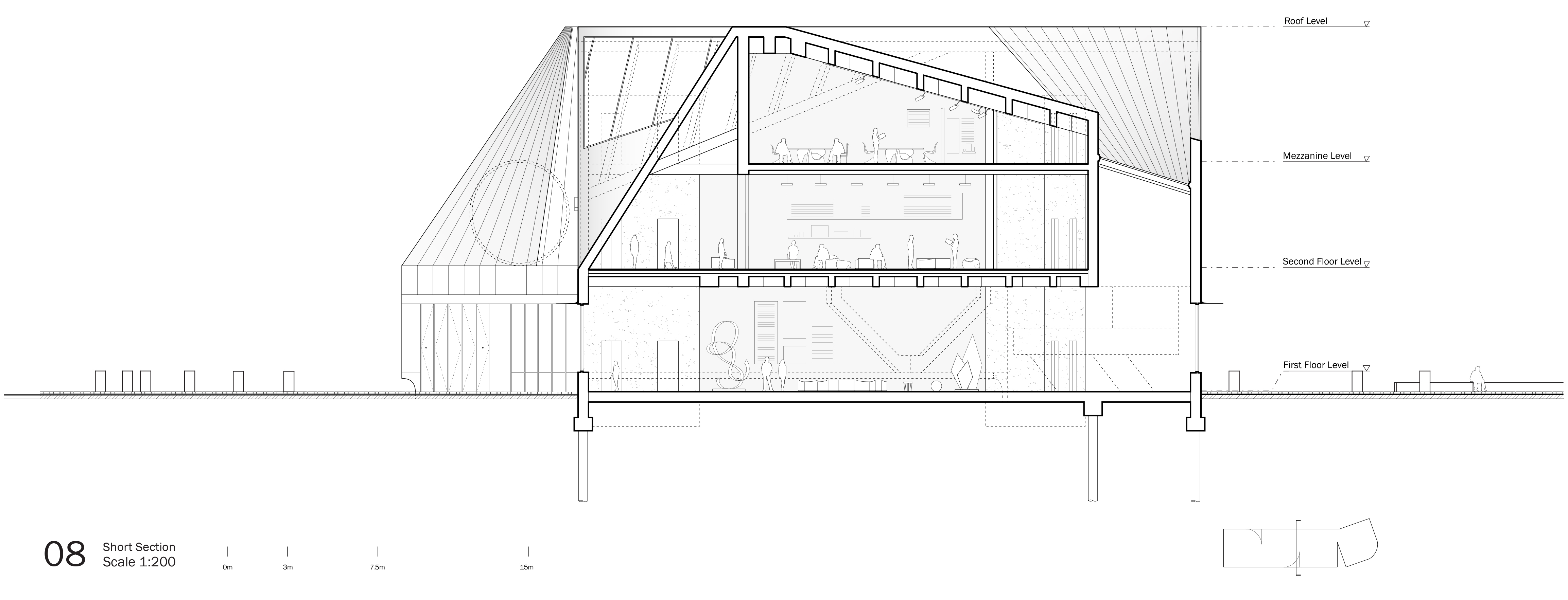
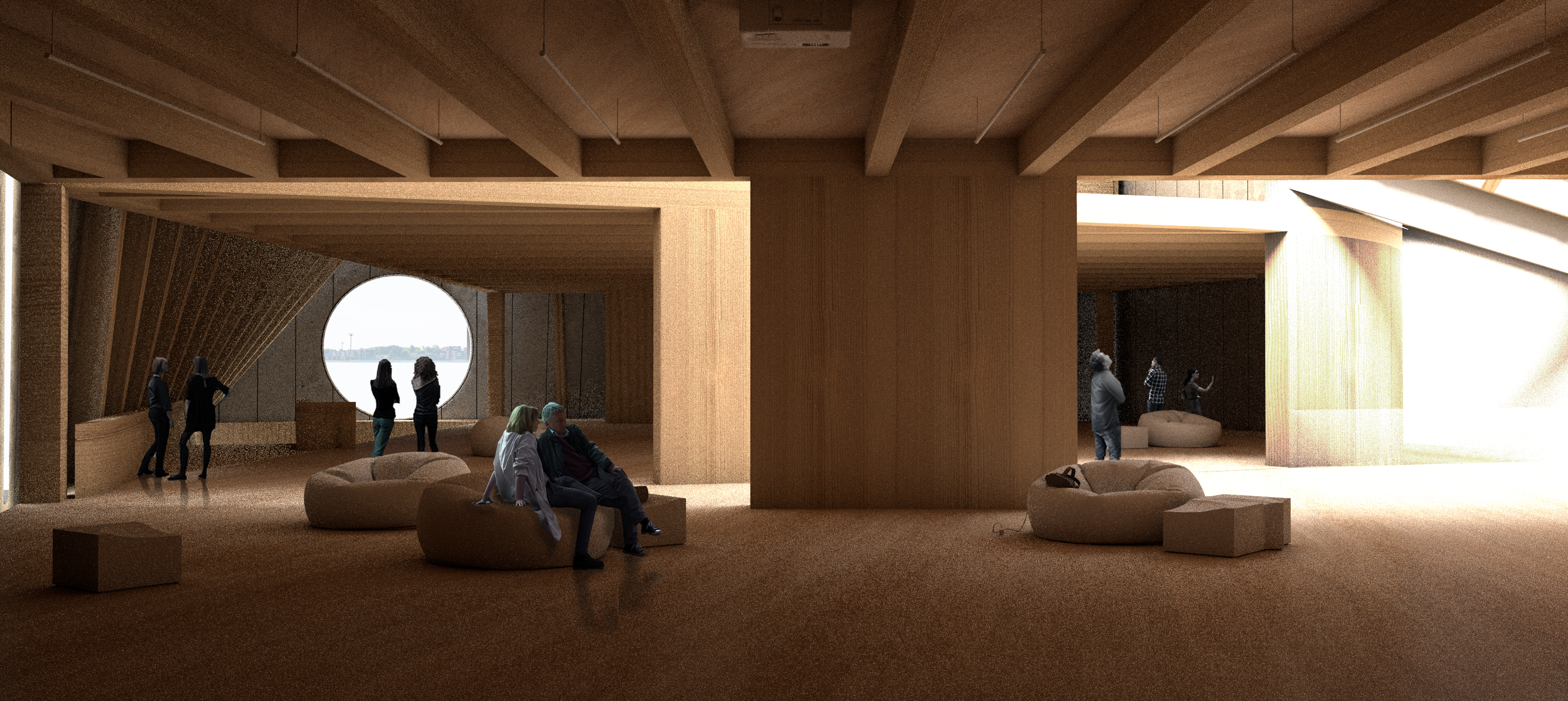
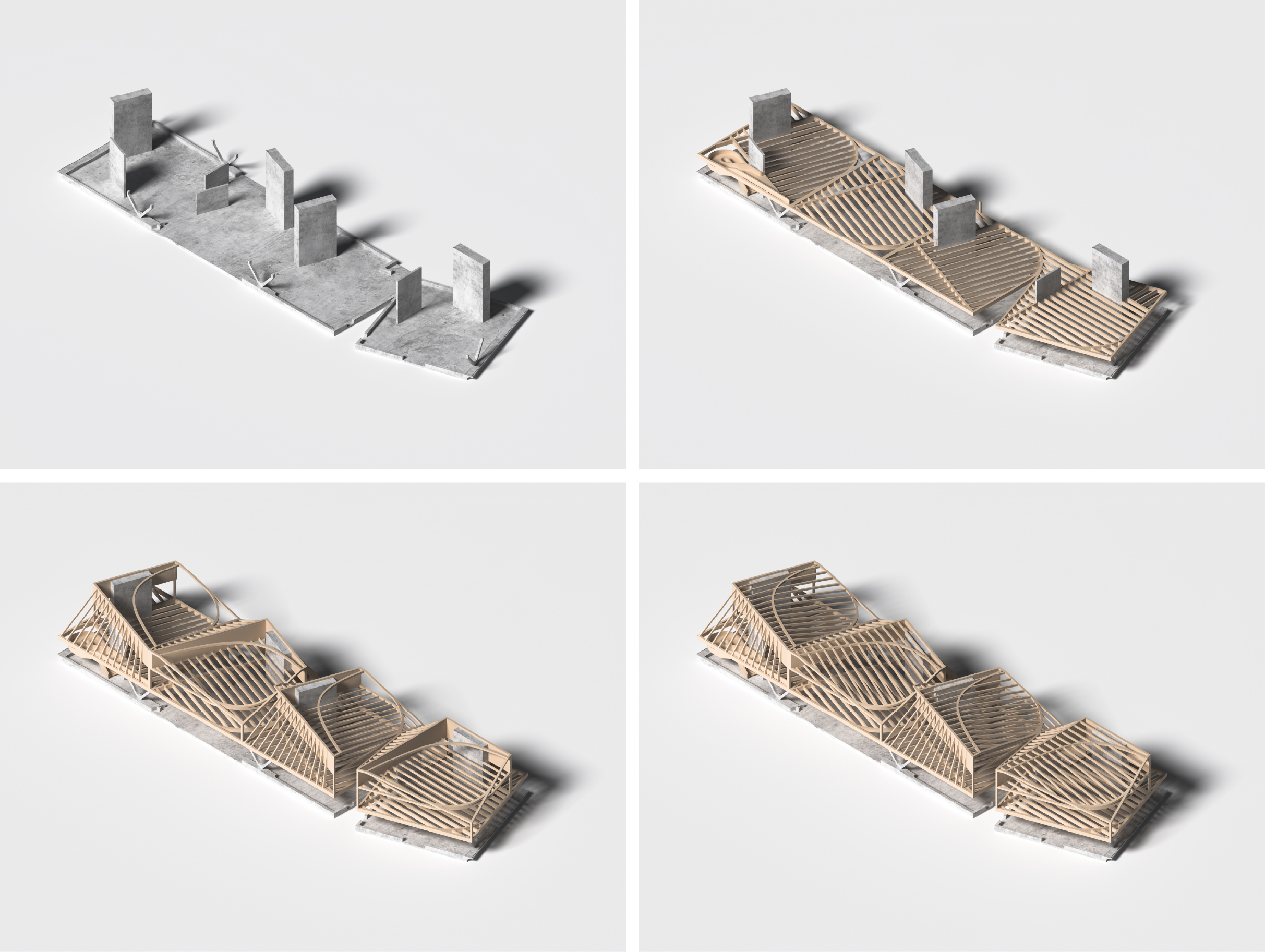
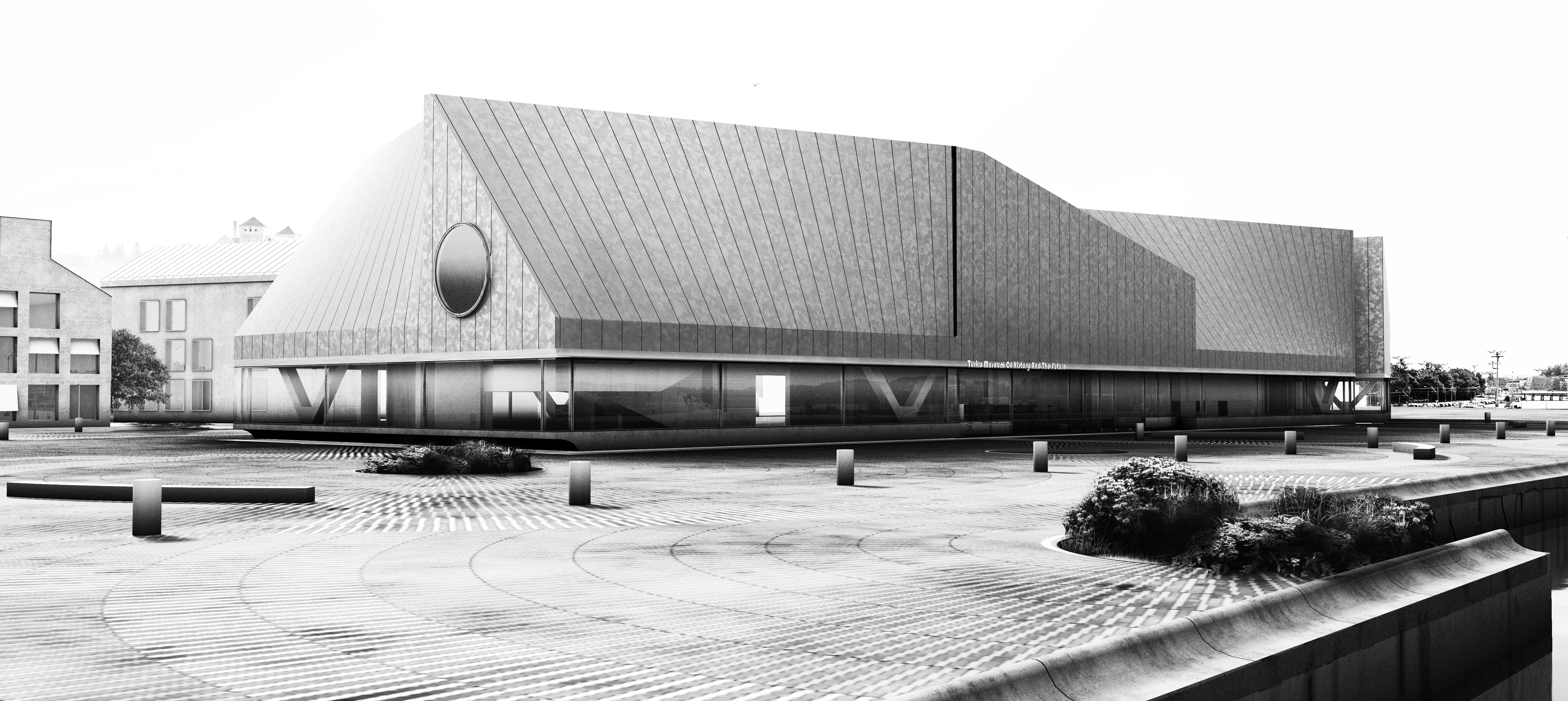
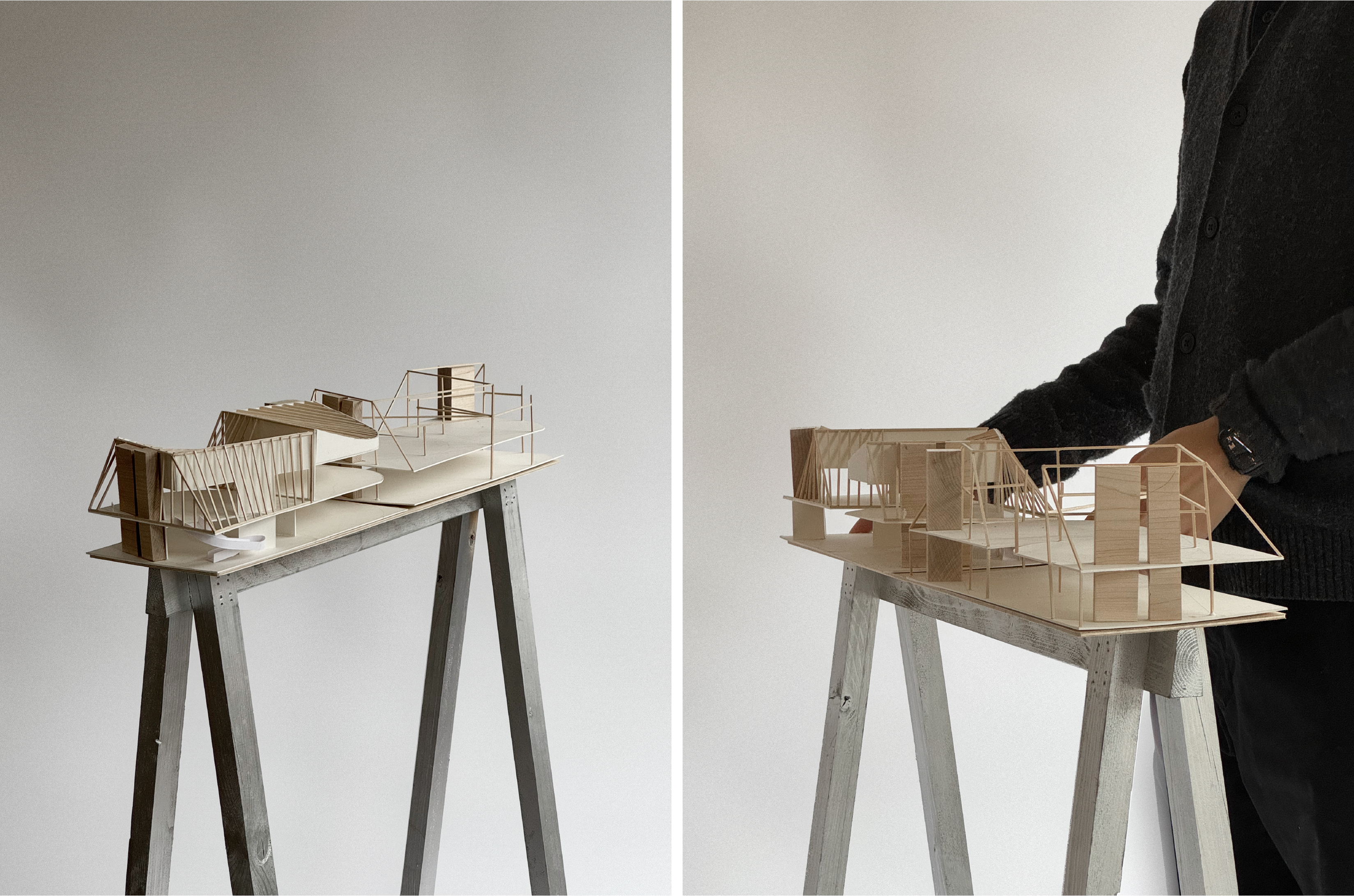
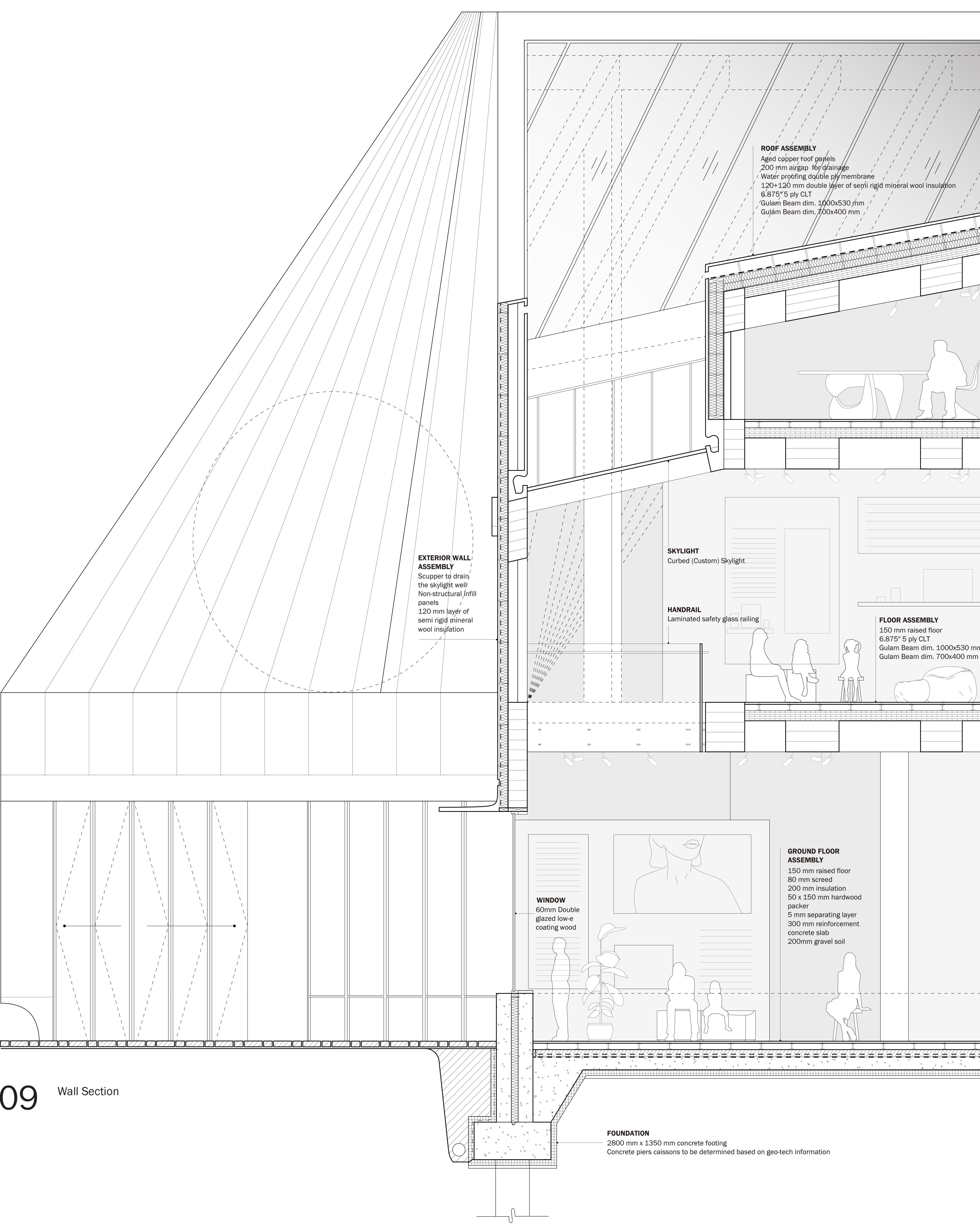
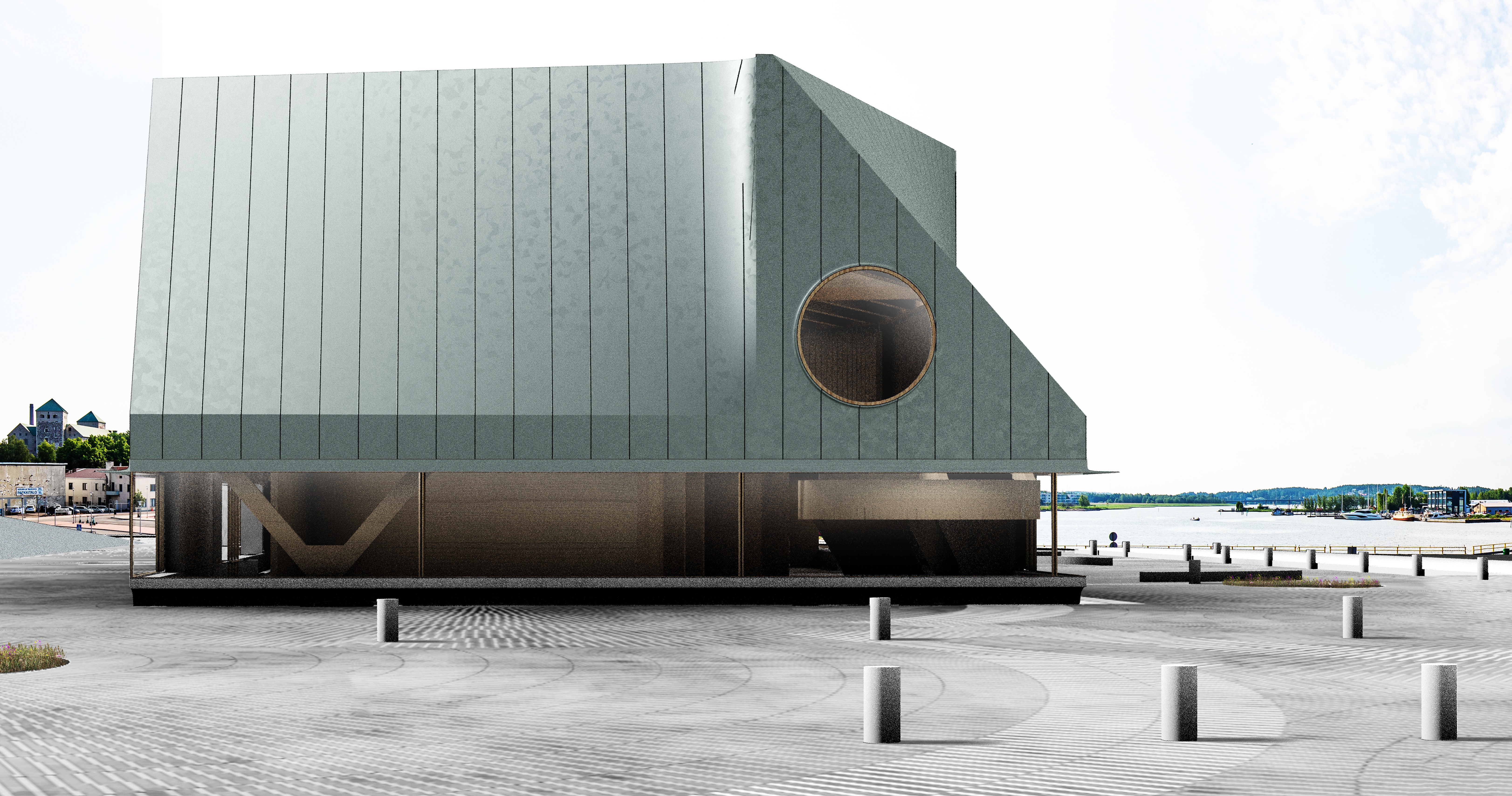
Project Description
The project seeks to balance two distinct formal ambitions. The first is to create a linear building along the Aura River, extending the promenade’s linearity into the Linnanniemi area and spreading its mass along its length to maximize views to and from the sea. The second is to fragment this linearity, breaking its scale and singularity into multiple views, orientations, and access points, transforming it into a collective icon for its unique geographical context: the Archipelago Sea.
In a simple gesture, the project becomes a linear cluster of two-and-a-half-story architectural volumes. These volumes are open on the ground level to the city and primarily enclosed on the upper levels, creating an ideal curatorial environment for galleries and exhibitions. The spatial experience above the second level evokes the sensation of moving through an occupiable mass timber roof structure, alternating between dark galleries and bright, double-height threshold spaces. The use of mass timber connects to Finland’s rich tradition of wooden architecture and the historical significance of warehouse buildings once found in this active shipping seaport. These warm spaces, overlaid with digitally augmented projections of Turku’s past and future, create an environment where the lines between history and modernity blur, allowing visitors to experience both simultaneously.
Programmatic Logic
The building features two generous main entrances, one from the water side and the other from the city side, both leading into a central lobby located in the lower level of the second volume. This design ensures that streams of visitors converge in the middle, fostering a vibrant and accessible public space that also serves as a shortcut through the building.
From this central hub, one pathway leads westward to the galleries via elevators and a grand staircase, while another path to the east provides access to the auditorium, café, and restaurant. This merging and diverging of pathways enhances the lobby’s vibrancy while offering varying degrees of separation between ticketed and non-ticketed areas. The final volume, located closest to the park, is slightly tilted to face Turku Castle, establishing a visual relationship with the national monument. This volume houses the restaurant on the waterside and includes art-handling facilities in its rear, subtly reflecting the distinct functions within.
Structure and Materiality
The proposed structure employs a hybrid system featuring a mass timber skeleton frame supported by a concrete mat foundation, with structural service cores extending upward to provide lateral stability. Linear timber elements will use Glulam members, while planar elements will consist of CLT decking. By positioning structural nodes away from the periphery, the building achieves vibrant glazed façades on the ground level, fostering visual and physical connections with the surrounding city.
The second level and mezzanine are clad in aged copper rain-screen sheets, chosen for their lightweight properties and their symbolic connection to Turku Castle. This cladding complements the occupiable roof space, tying the building’s materiality to its historical and architectural context.
A Resilient and Sustainable Public Space for the City
Turku is renowned as a green city and the birthplace of Finland’s gardening culture. The landscape design for the Turku Museum features unprogrammed open spaces capable of hosting various activities and events. A semi-permeable paved plaza incorporates soft drainage pockets alongside hard surfaces for accessibility. Each drainage zone is defined by a gradual 2% slope toward a central rain garden. These gardens, planted with resilient native wild perennials such as Aster finnicus, Achillea millefolium, and Thalictrum, naturally remediate stormwater before releasing it into the Aura River.
This landscape approach enhances biodiversity, promotes seasonal variation, and supports pollination, adding a distinctive character to the new public space. The design integrates ecological sustainability with functional urban design, contributing to Turku’s green legacy as a pioneer of urban greenery.
The Linear Archipelago project aims to create an architectural icon through a thoughtful blend of local history and global future considerations. Its hybrid design language reflects the goals of the competition while embracing sustainability. By integrating Finland’s architectural heritage and advancing global design discourse, the project aspires to join the tradition of great Finnish architecture that simultaneously resonates on local and international levels.
